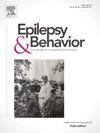利用电子健康记录识别并将癫痫患者纳入自我管理计划:在临床环境中的实施和可扩展性
IF 2.3
3区 医学
Q2 BEHAVIORAL SCIENCES
引用次数: 0
摘要
“癫痫和负面健康事件史患者的自我管理”(SMART)是一个为期8周的远程癫痫自我管理(ESM)项目。正在进行的扩展医疗保健网络中的自我管理支持(EXPAND)计划利用电子健康记录(EHR)来识别SMART候选人、简化招聘并减少员工工作量。方法:这是在两个4级癫痫中心(爱荷华州和辛辛那提)使用Epic EHR跟踪9326例癫痫患者(PWE)的持续实施工作。EHR使用会诊前筛查来识别最近癫痫发作的PWE;药物依从性障碍;抑郁症状;年龄要在18 - 25岁之间;或居住在农村地区。在门诊就诊时,Epic会生成一份最佳实践咨询(BPA)。临床医生点击BPA来转发转诊,或者表明病人拒绝或不是候选人。该计划旨在招收560名PWE。结果11名护士和同伴教育者接受了培训。在BPA激活的前5个月里,超过5000名临床医生发出警报,360名PWE被转介到SMART。在42名至少参加过一次SMART治疗的PWE中,平均年龄为35.0岁(12.0岁),其中57.5% (N = 23)为女性。过去30天平均癫痫发作次数为4.3次(10.0次)。在美国中西部2个癫痫中心开展的EXPAND计划正在成功实施,为PWE提供ESM。广泛使用的电子病历便利了转诊过程,远程交付形式允许在不同社区之间进行接触。这种实用的方法可以扩大规模,并可能成为将ESM扩展到PWE的模型。本文章由计算机程序翻译,如有差异,请以英文原文为准。
Harnessing the electronic health record to identify and enroll people with epilepsy into a self-management program: Implementation and scalability in a clinical setting
Rationale
“Self-management for people with epilepsy and a history of negative health events” (SMART) is an 8-week, remotely delivered, Epilepsy Self-Management (ESM) program. The ongoing EXPANDing self-management support in healthcare networks (EXPAND) initiative leveraged the Electronic Health Record (EHR) to identify SMART candidates, simplify recruitment, and reduce staff workload.
Methods
This is an ongoing implementation effort at two Level 4 Epilepsy Centers (Iowa and Cincinnati) using the Epic EHR which follows 9326 People With Epilepsy (PWE). The EHR uses pre-visit screening to identify PWE with a recent seizure; barriers to medication adherence; depression symptoms; age 18–25; or residence in rural regions. At outpatient visits, Epic generated a Best Practice Advisory (BPA). The clinician clicked the BPA to forward a referral or to signal either the patient declined or was not a candidate. The program aims to enroll 560 PWE.
Results
11 Nurse and Peer Educators received training. Within the first 5 months of BPA activation over 5000 clinician alerts were sent, 360 PWE were referred to SMART. Among 42 PWE who attended at least 1 SMART session, mean age was 35.0 (12.0), 57.5 % (N = 23) women. Mean past 30-day seizure count was 4.3 (10.0).
Conclusions
The EXPAND initiative, conducted in 2 Midwest U.S. epilepsy centers, is being successfully implemented to provide ESM to PWE. A widely available EHR has facilitated the referral process and remote delivery format allows for reach among diverse communities. This practical approach is amenable to scale-up and may be a model for expanding ESM access to PWE.
求助全文
通过发布文献求助,成功后即可免费获取论文全文。
去求助
来源期刊

Epilepsy & Behavior
医学-行为科学
CiteScore
5.40
自引率
15.40%
发文量
385
审稿时长
43 days
期刊介绍:
Epilepsy & Behavior is the fastest-growing international journal uniquely devoted to the rapid dissemination of the most current information available on the behavioral aspects of seizures and epilepsy.
Epilepsy & Behavior presents original peer-reviewed articles based on laboratory and clinical research. Topics are drawn from a variety of fields, including clinical neurology, neurosurgery, neuropsychiatry, neuropsychology, neurophysiology, neuropharmacology, and neuroimaging.
From September 2012 Epilepsy & Behavior stopped accepting Case Reports for publication in the journal. From this date authors who submit to Epilepsy & Behavior will be offered a transfer or asked to resubmit their Case Reports to its new sister journal, Epilepsy & Behavior Case Reports.
 求助内容:
求助内容: 应助结果提醒方式:
应助结果提醒方式:


